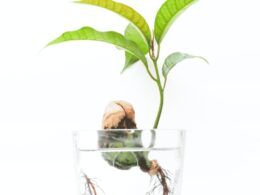Do you worry about the oxygen levels in your tank water? As a responsible tank owner, you want to provide the best living conditions for your aquatic pets. While oxygenation is essential for their survival, have you ever wondered if you can over oxygenate tank water?
The answer is yes, you can, and it can have negative consequences for your fish and other aquatic creatures. Over oxygenation in tank water can cause harm to your aquatic pets and disrupt the balance of their ecosystem.
It’s crucial to understand the signs of over oxygenation, its impact, and how to prevent it. In this article, we will explore the topic of over oxygenation in tank water and provide you with the necessary information to keep your aquatic pets safe and healthy.
Let’s dive in!
Understanding Over Oxygenation in Tanks
Understanding the consequences of excessive aeration in aquatic environments is crucial for maintaining a healthy ecosystem. When it comes to tanks, over oxygenation can have both benefits and drawbacks.
On one hand, it can help increase the dissolved oxygen levels in the water, which is important for the survival of fish and other aquatic life. However, too much oxygen can also lead to the buildup of harmful gases, such as carbon dioxide and nitrogen, which can be deadly for fish.
The drawbacks of over oxygenation in tanks can be severe. In addition to the buildup of harmful gases, excessive aeration can also cause stress for fish and other aquatic life. This can lead to weakened immune systems, making them more susceptible to disease and other health issues.
Additionally, over oxygenation can lead to an imbalance in the pH levels of the tank, which can further harm the ecosystem. Fortunately, there are solutions to prevent over oxygenation in tanks.
One option is to use an air pump with a regulator, which allows you to control the amount of oxygen being added to the tank. Another option is to use live plants, which naturally produce oxygen and can help balance out the levels in the tank.
By understanding the benefits and drawbacks of over oxygenation in tanks, and taking steps to prevent it, you can maintain a healthy and thriving aquatic environment.
Signs of Over Oxygenation
If you’re wondering whether you’ve over oxygenated your tank, there are some signs you can look out for. First, pay attention to how your fish are behaving. If they seem overly active or even gasping at the water surface, it could be a sign of too much oxygen.
Second, take a look at the water itself. Over oxygenation can cause bubbles or foam to form on the surface, and the water may appear cloudy or murky.
Lastly, check the water chemistry. Too much oxygen can cause a drop in pH levels, which can be harmful to your fish.
Fish Behavior
Fish may exhibit unusual behavior if the oxygen levels in their environment aren’t suitable for their needs.
If the water is over oxygenated, your fish may become hyperactive and swim frantically around the tank. They may also jump out of the water, which can cause injuries or even death.
In some cases, fish may start gasping for air at the surface of the water, even though there’s plenty of oxygen available. This is because over oxygenation can cause stress to fish and lead to oxygen deprivation in their tissues.
Another sign of over oxygenation is that your fish may become lethargic or lose their appetite. This can happen when the oxygen levels are too high and the fish aren’t used to it. They may also hide more often or stay in one spot, which can indicate that they’re uncomfortable or feeling stressed.
If you notice any of these behaviors, it’s important to test the water and adjust the oxygen levels accordingly. By keeping a close eye on your fish and their behavior, you can ensure that they’re living in a safe and healthy environment.
Water Appearance
Take a moment to really look at the appearance of your aquarium – are there any clues hiding in plain sight about the health of your fish?
One of the easiest things to notice is the water clarity. If your water is murky, cloudy, or discolored, it could be a sign that your fish are struggling. Cloudy water could be due to an excess of waste or uneaten food in the tank, or it could be a sign that your water chemistry is off.
Another thing to keep an eye out for is algae growth. While a little bit of algae is normal and even healthy for your tank’s ecosystem, excessive growth can be a sign that your water is too nutrient-rich. This can lead to oxygen depletion and a decrease in water quality, which can harm your fish.
So, if you notice that your tank’s water is looking a bit too green, it may be time to clean the tank and adjust your feeding and maintenance routine.
Water Chemistry
It’s crucial to maintain proper water chemistry in your aquarium to ensure the health and well-being of your aquatic pets. The pH balance and dissolved oxygen levels are two crucial factors that need to be monitored regularly.
Here are three things to keep in mind when it comes to water chemistry:
-
The pH balance should be kept within a specific range to avoid stressing out the fish. A pH level of 6.5 to 7.5 is ideal for most freshwater fish.
-
Dissolved oxygen levels should be maintained at a level that is safe for the fish. A lack of oxygen can lead to stress and even death in fish.
-
Adding too much oxygen to the tank can also be harmful. While it’s important to ensure that there is enough oxygen in the water, over-oxygenating can lead to changes in the pH balance, which can also be a problem.
Keeping the water chemistry in check is crucial to the health of your aquatic pets. By monitoring the pH balance and dissolved oxygen levels, you can ensure that your fish are living in a safe and healthy environment.
Remember to check these levels regularly and make adjustments as necessary to keep your aquarium in optimal condition.
What Are Some Natural Ways to Add Oxygen to Tank Water Without Over Oxygenating It?
Adding oxygen to water naturally is essential for maintaining a healthy tank environment. One way to achieve this is by incorporating live plants, which release oxygen during photosynthesis. Another method is using an air stone or diffuser, which increases aeration without excessively oxygenating the water. Additionally, a properly functioning filter can help oxygenate tank water efficiently.
Impact of Over Oxygenation
When oxygen levels in the aquarium become too high, the fish may begin to display erratic behavior and swim frantically around the tank. This is because high levels of oxygen can lead to hyperactivity in fish, which can eventually cause them to become stressed and even die.
Additionally, over oxygenation can also affect the growth of plants in the tank and have a negative impact on beneficial bacteria.
If you notice your fish behaving in an unusual way, it may be a sign that the oxygen levels in your tank are too high. One way to prevent this from happening is to ensure that you have an appropriate filtration system in place. A good filtration system can help to maintain a healthy balance of oxygen in the water, which will ultimately benefit the overall health of your aquarium.
Lastly, it’s important to remember that over oxygenation can have serious consequences for the health and well-being of your fish. So, if you notice any unusual behavior or suspect that your tank may be over oxygenated, take action immediately. By staying vigilant and taking proactive steps to maintain a healthy aquarium environment, you can help to ensure that your fish thrive for years to come.
Prevention and Treatment of Over Oxygenation
To prevent your beloved fish from experiencing unnecessary stress and harm, make sure to maintain a healthy balance of oxygen in your aquarium by implementing an appropriate filtration system and monitoring the behavior of your aquatic pets.
Over oxygenation can be caused by using a high-powered air pump, adding too many oxygenating plants, or simply having too much surface agitation in the tank. If you notice your fish gasping for air near the surface or displaying erratic behavior, it may be a sign of over oxygenation.
To adjust oxygenation levels, start by reducing the amount of surface agitation. This can be done by adjusting the flow rate of the filter or reducing the output of the air pump. You can also remove some of the oxygenating plants if you have too many. If your aquarium is heavily stocked, you may need to invest in a larger filtration system to help maintain a healthy balance of oxygen.
By taking these preventative measures and adjusting oxygenation levels as needed, you can ensure the well-being of your fish and other aquatic pets. Remember to monitor your tank regularly and make adjustments as necessary to maintain a healthy and balanced environment.
Best Practices for Oxygenation in Tanks
Maintaining optimal oxygen levels in aquariums is crucial for the health and well-being of aquatic pets, and implementing best practices for oxygenation can ensure a balanced and thriving ecosystem. There are different oxygenation techniques available, but the most common practice is to use an air pump to create bubbles in the water. This process increases the exchange of gases between the water and the air above, which leads to higher oxygen levels in the tank.
When selecting equipment for oxygenation, it’s important to consider the size of the tank and the type of aquatic pets that’ll be living in it. The air pump and air stone should be able to provide enough oxygen to the entire tank, and the air stone should be placed in a location that creates even distribution of bubbles. Additionally, it’s recommended to use a check valve to prevent water from flowing back into the air pump, which can cause damage and decrease its effectiveness.
In summary, maintaining optimal oxygen levels in aquariums is essential for the health and well-being of your aquatic pets. Using an air pump and air stone is the most common oxygenation technique, but selecting the right equipment and placement is crucial for effectiveness. By implementing best practices for oxygenation, you can ensure a thriving and balanced ecosystem for your underwater companions.
Frequently Asked Questions
How does over oxygenation differ from under oxygenation in a tank?
If you’re wondering how over oxygenation differs from under oxygenation in a tank, there are a few key things to consider.
First of all, over oxygenation can have negative effects on plant growth, as too much oxygen can actually inhibit photosynthesis. Additionally, over oxygenation can impact the nitrogen cycle in your tank, potentially leading to a buildup of toxic ammonia.
On the other hand, under oxygenation can lead to low oxygen levels and poor water quality, which can be detrimental to the health of your fish and other aquatic creatures.
So, finding the right balance of oxygenation in your tank is crucial for creating a healthy and thriving aquatic environment.
Can over oxygenation harm fish and other aquatic life in a tank?
Over oxygenation can harm fish and other aquatic life in a tank. Oxygenation effects depend on the amount of oxygen in the water, which can lead to a lack of oxygen for aerobic bacteria.
Aerobic bacteria are crucial for breaking down waste and maintaining a healthy tank ecosystem. However, too much oxygen can lead to supersaturation, which can cause gas bubble disease in fish. This disease can be fatal and is caused by air bubbles forming in the bloodstream and tissues of fish.
It’s important to maintain a balance in oxygen levels in your tank to ensure the health and safety of your aquatic life.
Is it possible to have too little oxygenation in a tank?
It’s crucial to ensure proper aeration in your tank to maintain a healthy environment for your aquatic pets.
Low oxygen levels can be harmful to fish and other aquatic life, leading to stress, illness, and even death. Signs of low oxygen levels include gasping at the surface, lethargy, and reduced appetite.
To prevent this, it’s essential to have adequate aeration in your tank. This can be achieved through the use of air stones, filters, and water movement. Regular water changes and cleaning also help to maintain oxygen levels.
Remember, the importance of aeration can’t be overstated. Keep an eye out for signs of low oxygen levels and take action promptly to ensure the safety and well-being of your aquatic pets.
How often should you monitor oxygen levels in a tank?
Monitoring oxygen levels in your tank is crucial for the health and safety of your aquatic pets. The importance of aeration cannot be understated, as it helps to maintain healthy oxygen levels in the water.
Factors affecting oxygen levels include the number of fish in the tank, the size of the tank, and the amount of plants and other organisms in the tank.
It is recommended that you monitor oxygen levels at least once a week, or more frequently if you have a heavily stocked tank. An oxygen level below 5mg/L can be dangerous for fish, so it’s important to take action if you notice a drop in oxygen levels.
By monitoring oxygen levels regularly, you can ensure the safety and well-being of your aquatic pets.
Are there any natural ways to oxygenate tank water without the use of equipment?
Looking for natural ways to oxygenate your tank water? There are several DIY aeration techniques that you can try!
One popular method is to add live plants to your tank. Plants release oxygen during photosynthesis, so they can help to naturally oxygenate the water.
Another technique is to create a waterfall or fountain in your tank, which will increase surface agitation and help to oxygenate the water.
Benefits of natural oxygenation include healthier fish and a more balanced ecosystem. Plus, by avoiding the use of equipment, you can save money and reduce the risk of electrical hazards.
So why not try some natural aeration techniques in your tank today?
Conclusion
So, can you over oxygenate tank water? Yes, you can, and it can have negative consequences for your aquatic pets. Over oxygenation can lead to stress, illness, and even death in fish and other aquatic creatures.
To prevent over oxygenation, it’s important to monitor the oxygen levels in your tank regularly and adjust the oxygenation accordingly. If you do notice signs of over oxygenation, such as excessive bubbling or fish gasping at the surface, take action immediately by reducing the oxygenation and performing a partial water change.
By following best practices for oxygenation in tanks, you can ensure a healthy and thriving aquatic environment for your pets.









